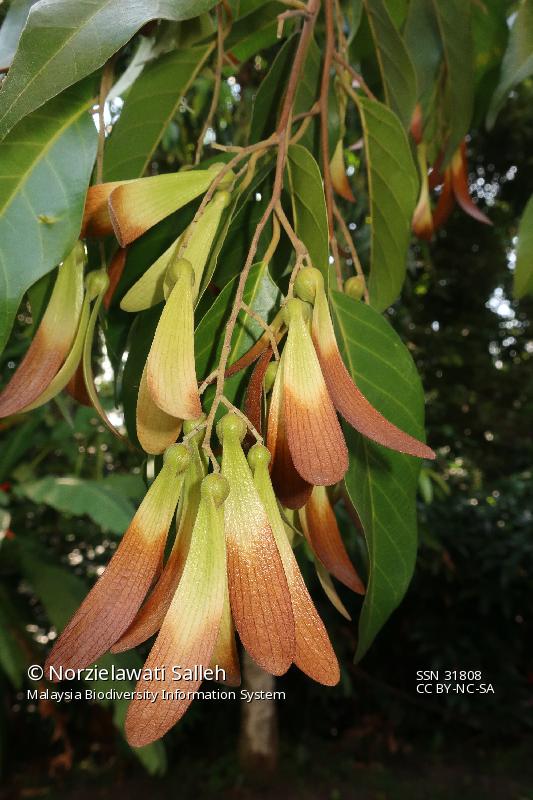
Hopea odorata, a member of the Dipterocarpaceae, is popularly known locally as Cengal Pasir or Merawan Siput Jantan. The genus name, Hopea, honours Dr John Hope (1725-1786) who was a Scottish botanist at the Edinburgh Botanic Garden, U.K., while the species name, odorata, refers to the fragrant flowers.
Hopea odorata is distributed from Bangladesh, the Andaman and Nicobar Islands, Indo-China, Thailand, and Malaysia to Indonesia. In Peninsular Malaysia, it is a well-known tree in Pulau Langkawi, Perlis, Kedah, northern Perak, Kelantan and Terengganu (Symington, 2004). It is found in lowland dipterocarp forest and seasonally dry tropical rain forests, mainly growing in riparian areas, and is rarely found far from streams. This species is very common in Peninsular Malaysia because it has been widely planted, especially as a roadside tree. However, in the wild it is rare, and the species is considered as Vulnerable (VU) for Malaysia (Chua et al., 2010) due to forest clearance.
Members of the Dipterocarpaceae are known to have winged fruits and also produce resin. The fruit of this species is an ovate-conical nut with two-wings. The flowers are pale yellow and leaves unequal-sided. The main characteristic for identification of this species is the presence of the pore-like domatia in the leaf axils. The tree has scaly bark and the inner bark is dull brown or greenish yellow and sometimes tinged very faintly pink.
Hopea odorata is widely grown as a shade tree in the villages of Kelantan and Terengganu. It is a popular roadside tree species, especially in Kuala Lumpur, because of its fast growth, and tall, straight and clear bole. Besides that, this species produces a valuable timber known as kayu merawan that is very durable and strong, and often used to make boats and canoes.
